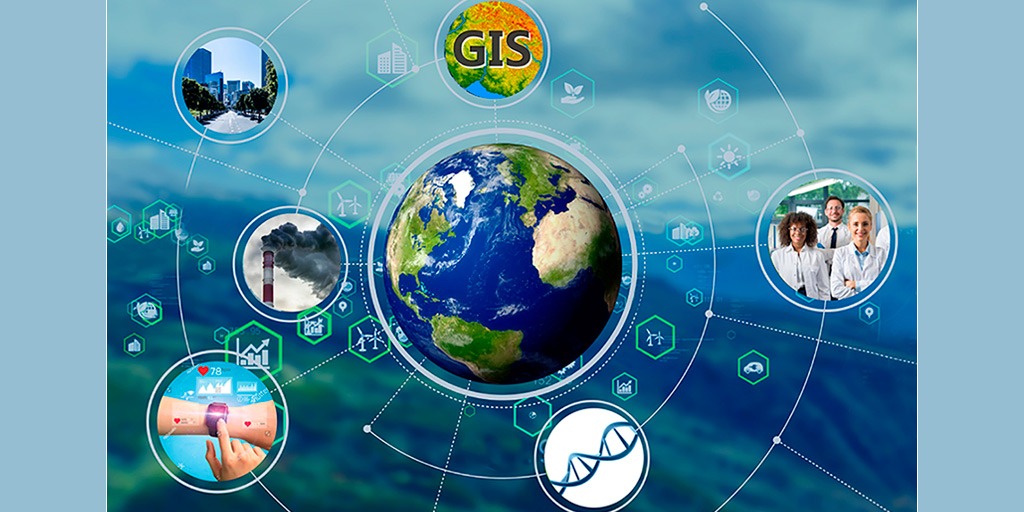Geospatial technology has become an integral part of our everyday lives. It helps us map our route, warns us when the air quality in our area is unhealthy, and even tracks our location when we are playing on our smart phones. But scientists believe that geographic information systems can do much more, particularly when expanded from the personal to the population level.
“We hope to explore how geospatial technologies can be added to the toolbox of methodologies used to collect environmental exposures, and ultimately how that data could be seamlessly integrated into large human population studies,” said NIEHS and National Toxicology Program Director Rick Woychik, Ph.D., at the start of the institute-sponsored workshop June 15-16.
The two-day virtual event drew more than 400 participants from around the globe and a variety of backgrounds, including epidemiology, exposure science, geospatial analysis, genetics and genomics, and data science.
“That diversity aligns very well with the goals of the workshop, which are to foster interdisciplinary interactions and collaborations, promote the integration of geospatial technologies in public health studies, and advance our understanding of human health and disease,” said Yuxia Cui, Ph.D., NIEHS program officer and co-chair of the workshop planning committee.
Eyes in the sky
In recent years, satellite remote sensing data has become a powerful tool to measure the exposure of entire populations to various environmental risk factors such as air pollution. NIEHS grantee Yang Liu, Ph.D., from Emory University, provided an overview of emerging satellite instruments, their data products, and potential applications in environmental health research.
“These satellite instruments generate terabytes of data every day that can be used for population health studies,” said Liu.
Ground-level observations
 Last year, Motsinger-Reif spoke with Environmental Factor about her career journey and path to NIEHS, which you can read about in this article. (Photo courtesy of Steve McCaw / NIEHS)
Last year, Motsinger-Reif spoke with Environmental Factor about her career journey and path to NIEHS, which you can read about in this article. (Photo courtesy of Steve McCaw / NIEHS)Other speakers explained how they are gathering data closer to earth on environmental exposures. Alison Motsinger-Reif, Ph.D., chief of the NIEHS Biostatistics and Computational Biology Branch, described early results from the Personalized Environment and Genes Study (PEGS), which has collected health, family history, environmental exposures, and lifestyle data on more than 19,000 participants (see sidebar for other large population health studies).
Motsinger-Reif explained how one of the first studies to come out of PEGS showed that the risk of immune-mediated diseases such as seasonal allergies increased with proximity to caged animal feeding operations (CAFOs), an important environmental exposure in North Carolina.
“The CAFOS example is the tip of the iceberg of the types of data that we are integrating,” she said. Motsinger-Reif added that such integration requires an open dialogue between data scientists and human geneticists such as herself.
Moving forward
“There are roadmaps of how we are going to combat cancer, neurodegeneration, Alzheimer’s, and so on, but do we have a roadmap for environment and the changes we need [to improve human health]?” asked Roel Vermeulen, Ph.D., of Utrecht University in The Netherlands at a panel session on next steps.
David Balshaw, Ph.D., chief of the NIEHS Exposure, Response, and Technology Branch, emphasized the value of bringing people together and identifying a common goal to work toward.
“Sometimes it’s enough just to hear each other speak and learn how each other thinks; that process itself moves science forward,” he said. “At that level, the workshop has been hugely successful. But I also think that there have been a number of very tangible things that we have heard that we as a community can think about.”
Those issues include the need for international collaboration among the exposure science community and efforts to prioritize solutions to longstanding problems in the field.
(Marla Broadfoot, Ph.D., is a contract writer for the NIEHS Office of Communications and Public Liaison.)
Source link
factor.niehs.nih.gov

